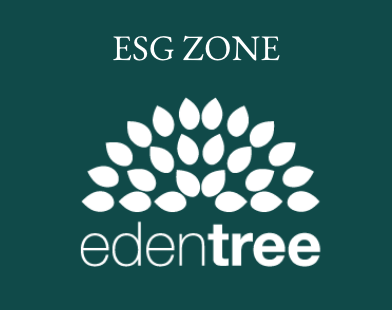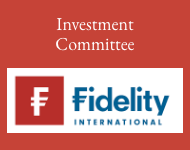The number of thematic ETFs is growing fast. With greater quantity comes greater complexity around choice, says Wayne Nutland, head of Managed Index Solutions, Premier Miton Investors.
 Thematic ETFs have seen significant asset growth and investor interest in recent quarters. Thematic investing is a way of investing to a narrative or theme which cuts across traditional investment categories such as geography, sector or company size. Popular themes include clean energy, robotics and cyber security.
Thematic ETFs have seen significant asset growth and investor interest in recent quarters. Thematic investing is a way of investing to a narrative or theme which cuts across traditional investment categories such as geography, sector or company size. Popular themes include clean energy, robotics and cyber security.
Historically active funds were the only way to access thematic investment themes and whilst active thematic funds are themselves growing rapidly, thematic ETFs are also growing fast. According to Bloomberg, assets in thematic ETFs domiciled in Europe stood at $37.5bn at the end of June 2021, from $9.2bn at the end of 2019.
What’s the story behind the growth in thematic ETFs?
As both thematic active funds and ETFs have seen very strong growth recently, the growth in thematic investment isn’t just an ETF phenomena. Rather there appears to be strong investor interest in capturing growth themes via specific granular thematic allocations as opposed to using traditional broad growth funds.
Although investment themes vary hugely, they tend to be growth related, and consequently many themes have performed very strongly in recent years. Given the suddenness of the increase in funds under management, it seems likely that the strong performance of many growth related themes has been a key driver.
As well as being attracted by strong performance, investors may also be responding to the increasing awareness of technological and societal change, and increased support and spending on such areas, such as climate change and technology related infrastructure spending. The pandemic may have acted as a catalyst by increasing the importance and visibility of technological innovation in many areas of life.
In terms of specific ETF causes, it’s notable that although there are smart beta and factor ETFs, these generally don’t track growth as a factor. Although the momentum factor has often provided a similar exposure to growth, it’s likely that thematic ETFs are filling a gap in the growth ETF space.
Technological developments have aided the growth in thematic ETFs, beyond the increasing visibility of technology as an investment theme. Technological developments have made systematic thematic strategies easier to create and maintain, with many thematic ETFs leveraging big data approaches to select stocks using various data sources, an approach which would have been very labour intensive in decades past.
In many respects the growth in thematic ETFs is a natural evolution of the ETF market. Core beta ETFs are very competitively priced and established ETFs have significant first mover advantages making it hard for ETF providers to compete. Consequently ETF providers are keen to move into areas where they can develop their ranges, differentiate their products and charge higher fees. Thematic ETFs are something of a gift to fund marketing teams who can use narratives about technological innovation and societal trends which make for far more exciting fund adverts than investing in the FTSE 100 or S&P 500!
Is this a positive story?
The clearest benefit from the growth in thematic ETFs is increased choice, enabling investors to make specific allocations to themes they believe offer attractive prospects, such as cyber security, or which align with their values such as clean water. Thematic ETFs enable investors to make these more precise and tailored allocations using transparent, rules based thematic strategies. Thematic ETFs are usually cheaper than active thematic managers, although thematic ETFs are notably more expensive than core beta ETFs.
Another key benefit for ETF investors, is that thematic ETFs represent baskets of stocks which are non-market cap based. Although sector and factor ETFs have been around for some time they are generally market cap based. Consequently thematic ETFs are useful in that they offer cross sectional baskets of stocks which cut across market size, sector and geographic segments, and these may have tactical investment appeal over and above the theme itself.
Finally thematic ETFs can help benchmark thematic active managers, although of course different approaches in stock selection and portfolio construction must be considered as part of a holistic performance assessment.
Is there a twist in the tale?
As ever with more choice comes the risk of making the wrong choice increases. On first reading there could be something counter-intuitive here. Passive ETFs were originally designed to avoid having to make a choice – just buy the market! However the expansion of ETFs into factors, sectors and now themes has re-introduced the dilemma of choice, and therefore increased the risk of making the wrong choice.
The easiest way to resolve this apparent dilemma is to regard an ETF as a wrapper, and to differentiate between investment strategy and implementation method when it comes to the word passive. Thematic ETFs clearly follow active strategies which are designed to capture what are often narrow themes. However the themes are converted into indices for the ETFs to track and the ETFs passively track the indices. Hence we have an active strategy which is rules based and passively implemented, which just happens to be in an ETF wrapper.
Related to the dilemma of choice, it should be noted that historically, growth in thematic investing has tended to occur before peaks in equity markets. We need to consider that whilst a theme may well go on to enjoy widespread adoption in society, the valuations of the companies today may simply be too high or the long-term economics of an industry may be poor, even if it does exhibit strong top line growth.
Consequently it’s important to undertake due diligence on any thematic investment. Broadly speaking thematic ETFs and active thematic managers should be assessed in similar ways. Put simplistically, we need to ask how are the stocks selected, how are they put together and what are the resulting exposures.
Investors must consider carefully how thematic investments are weighted and integrated into a wider portfolio. Although thematic funds cut across geography, sector and company size, they are inherently more focused and less diversified than traditional equity funds. For most equity investors using thematic funds as a complement to core equity funds will be the most sensible approach.
The moral of the story…
Overall the development of thematic ETFs is welcome. Thematic ETFs allow investors to make granular allocations in a transparent manner, usually at lower cost than using active thematic funds. However as choice proliferates, complexity increases and along with it the risk of making the wrong choice. Due diligence is important as is remembering that a theme may be correct in the long term but today’s valuations may not be.
And a final wish from an ETF investor…
Although thematic ETFs are generally cheaper than active thematic funds they are notably more expensive than core beta ETFs. Whilst some fee premium is understandable given the greater complexity in thematic ETFs compared to core beta ETFs, hopefully as thematic ETFs grow and benefit from economies of scale, thematic ETF fees will reduce over time.



































